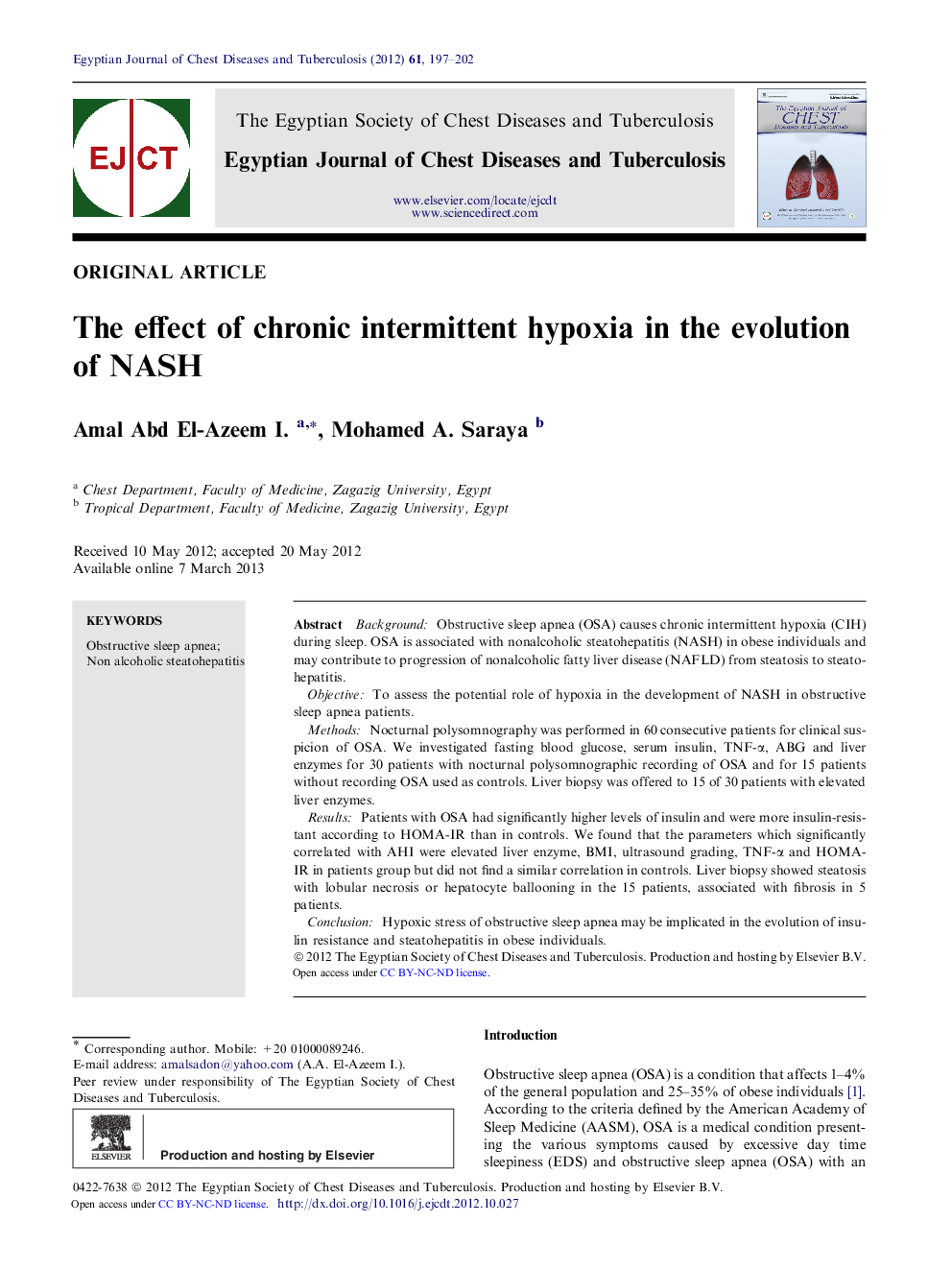| Article ID | Journal | Published Year | Pages | File Type |
|---|---|---|---|---|
| 3400402 | Egyptian Journal of Chest Diseases and Tuberculosis | 2012 | 6 Pages |
BackgroundObstructive sleep apnea (OSA) causes chronic intermittent hypoxia (CIH) during sleep. OSA is associated with nonalcoholic steatohepatitis (NASH) in obese individuals and may contribute to progression of nonalcoholic fatty liver disease (NAFLD) from steatosis to steatohepatitis.ObjectiveTo assess the potential role of hypoxia in the development of NASH in obstructive sleep apnea patients.MethodsNocturnal polysomnography was performed in 60 consecutive patients for clinical suspicion of OSA. We investigated fasting blood glucose, serum insulin, TNF-α, ABG and liver enzymes for 30 patients with nocturnal polysomnographic recording of OSA and for 15 patients without recording OSA used as controls. Liver biopsy was offered to 15 of 30 patients with elevated liver enzymes.ResultsPatients with OSA had significantly higher levels of insulin and were more insulin-resistant according to HOMA-IR than in controls. We found that the parameters which significantly correlated with AHI were elevated liver enzyme, BMI, ultrasound grading, TNF-α and HOMA-IR in patients group but did not find a similar correlation in controls. Liver biopsy showed steatosis with lobular necrosis or hepatocyte ballooning in the 15 patients, associated with fibrosis in 5 patients.ConclusionHypoxic stress of obstructive sleep apnea may be implicated in the evolution of insulin resistance and steatohepatitis in obese individuals.
